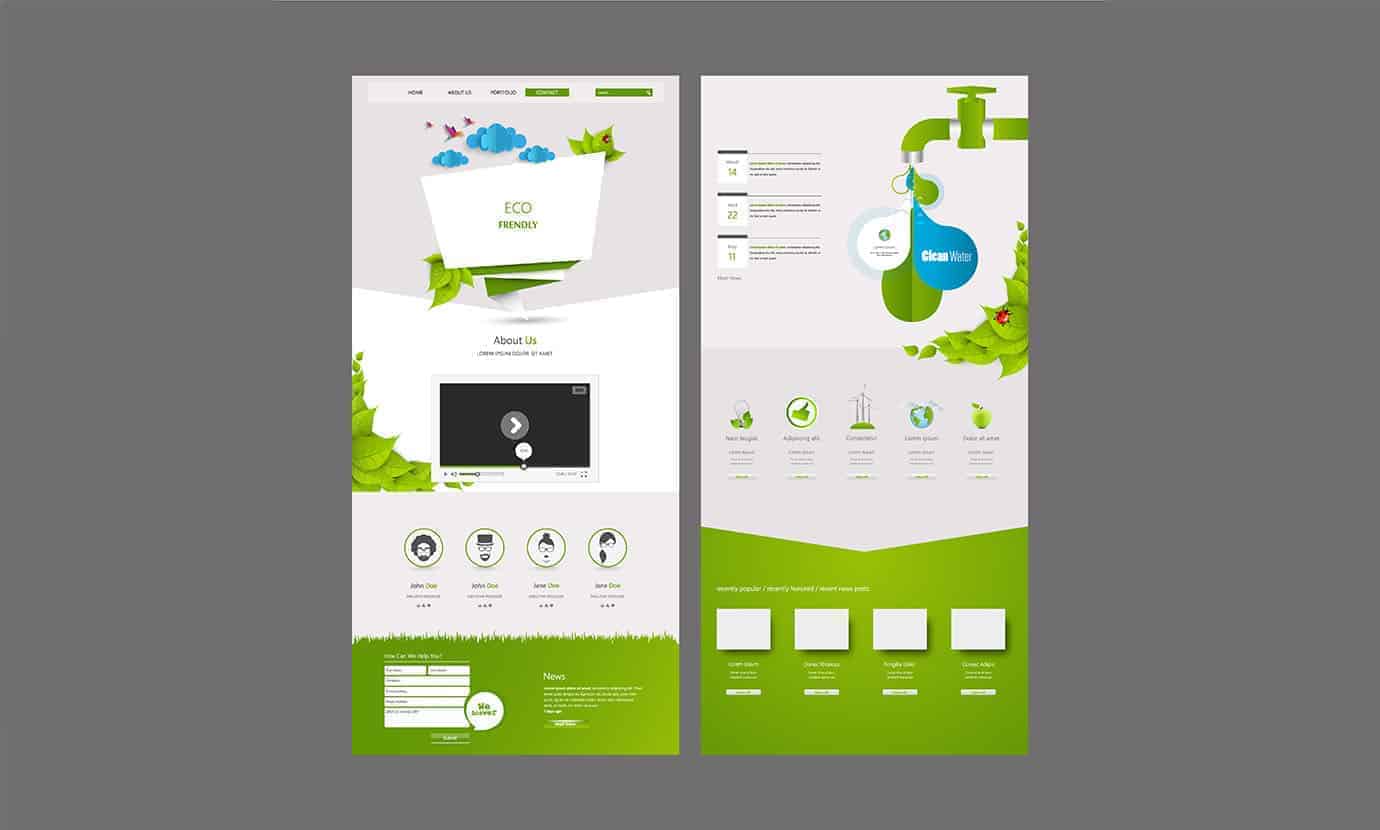Website Design Best Practices for Faster Load Times and Improved User Experience
Website Design Best Practices for Faster Load Times and Improved User Experience
Blog Article
Modern Site Style That Records Focus and Converts
In a progressively electronic landscape, contemporary internet site design has actually arised as a pivotal aspect in recording individual interest and driving conversions. As we check out these necessary components, it becomes clear that understanding their interplay can dramatically affect an internet site's efficiency and customer satisfaction.
Relevance of Visual Power Structure
Visual hierarchy is an essential element in website layout, as it guides users' focus and boosts their overall experience. By strategically organizing web content, developers can guide customers to one of the most crucial info initially, thereby increasing involvement and enhancing usability. Effective aesthetic hierarchy employs various strategies, consisting of size, comparison, color, and spacing. Larger elements normally draw the eye, while contrasting shades can emphasize vital messages, making them attract attention amongst more subdued components.
Integrating a sensible flow in web content setup is important; for example, placing one of the most critical info at the top of a web page fosters instant acknowledgment. Regular use of typography, such as varying font sizes and designs, assists develop a clear web content structure. This organization not just help in navigating but also constructs trust, as individuals really feel more comfortable when they can easily discover what they are seeking.
Eventually, a well-executed visual power structure not only enhances aesthetic charm yet additionally considerably affects customer habits. By focusing on important aspects and making certain a smooth experience, developers can effectively convert visitors into clients, enhancing the importance of this fundamental design concept in modern website development.
Responsive Design for All Gadgets
Creating a seamless experience across numerous tools is crucial in today's electronic landscape, where customers accessibility websites from mobile phones, desktops, and tablets alike. Receptive layout is an essential approach that ensures internet sites adjust fluidly to different display orientations, resolutions, and dimensions. By employing adaptable grids, images, and CSS media questions, designers can develop layouts that keep visual honesty and capability, no matter the device being utilized.
The significance of receptive style extends past aesthetics; it straight affects user involvement and conversion rates. A website that functions well on all devices urges longer check outs and reduces bounce rates, as users are most likely to engage with content that is simple to browse. Moreover, internet search engine, particularly Google, prioritize mobile-friendly websites in their rankings, making responsive layout a vital component of search engine optimization (SEO)
Including responsive design not only enhances customer experience but also enhances the growth procedure. By creating a solitary site that functions throughout gadgets, services can conserve time and resources contrasted to creating different mobile and desktop computer variations. Inevitably, responsive design is a fundamental method for contemporary website layout, making certain access and satisfaction for all users, no matter of their device.
Engaging Interactive Components
While a responsive style lays the foundation for a useful website, incorporating appealing interactive elements is essential for recording customer interest and fostering deeper links. Website Design. Interactive elements, such as animations, quizzes, and clickable infographics, create an extra vibrant customer experience, encouraging site visitors to spend more time on the website
Including interactive functions can also direct individuals with complex information, making it easier to digest content. Interactive sliders can highlight item variations, while embedded videos can provide presentations or testimonials that resonate more than static photos or text. Gamification techniques, like rewards for completing tasks or involving with content, can improve individual motivation and retention.
Reliable usage of interactive aspects not only enriches the customer experience however can likewise lead to greater conversion rates. It is important to stabilize interactivity with efficiency; excessively complex features might prevent site rate, adversely affecting individual contentment.
Structured Navigating Practices
Reliable navigation is a keystone of any kind of go to my site successful site, as it directly affects user experience and content ease of access. Structured navigating practices make certain that customers can easily situate info, boosting their interaction with the site. A well-structured navigation menu ought to be basic and user-friendly, usually featuring a minimal variety of key classifications to prevent overwhelming visitors.
To accomplish streamlined navigation, designers ought to prioritize an ordered framework that practically organizes web content. Carrying out breadcrumb trails can offer individuals with context concerning their current place within the site, permitting seamless backtracking. Additionally, using drop-down food selections can efficiently save area while still supplying access to subcategories.
Receptive style is vital, as navigation should be practical across all gadgets (Website Design). Mobile individuals, specifically, take advantage of touch-friendly food selections and retractable sections that preserve usability without jeopardizing looks

Reliable Call-to-Action Strategies
A well-crafted call-to-action (CTA) is crucial for directing users towards preferred outcomes on a site, as it encourages them to engage with material or make an acquisition. To optimize their efficiency, CTAs should be clear, compelling, and strategically placed throughout the site.
First, utilize action-oriented language that interacts necessity or worth, such as "Get Begun," "Join Currently," or "Insurance claim Your Discount rate." This language not only encourages individuals but likewise establishes clear expectations concerning the next steps.
2nd, consider design components; CTAs should stick out visually with contrasting colors, adequate whitespace, and noticeable positioning. A switch that is very easy to see and click boosts the chance of user interaction.
Additionally, personalizing redirected here CTAs based upon individual habits or demographics can considerably improve interaction. Tailored messages reverberate much more with customers, driving higher conversion rates.

Verdict
To conclude, modern-day web site design emphasizes the combination of aesthetic power structure, responsive designs, engaging interactive elements, streamlined navigating, and reliable call-to-action strategies. These elements jointly enhance individual experience, making certain that site visitors continue to be involved and encouraged to explore material additionally. By focusing on these layout principles, services can significantly improve user retention and conversion rates, eventually resulting in better success in the electronic landscape. The continual advancement of internet layout highlights its essential role in effective online communication and advertising and marketing.
In a significantly electronic landscape, modern-day website layout has emerged as a critical factor in recording important link customer interest and driving conversions.Visual hierarchy is an essential component in site design, as it guides individuals' attention and boosts their total experience.The importance of responsive style prolongs past aesthetic appeals; it directly influences user interaction and conversion rates.Including responsive design not just improves user experience but also improves the growth process. Ultimately, receptive layout is a fundamental technique for contemporary website style, guaranteeing availability and satisfaction for all users, regardless of their tool.
Report this page